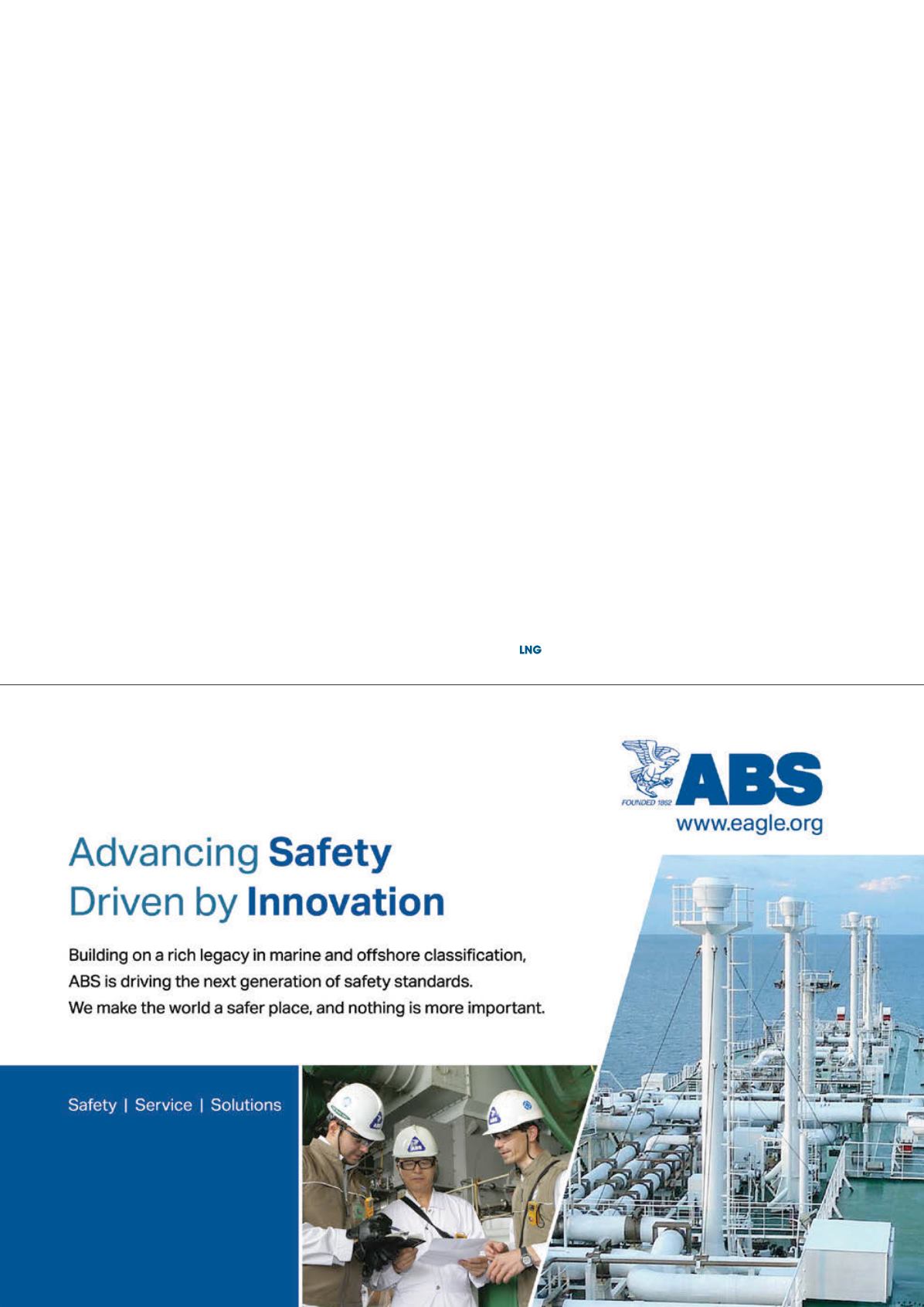
Availability
Availability of the various tank systems is also quite different.
The membrane tank technologies are licensed by GTT in France
and only a small number of newbuilding and repair shipyards in
Asia and Europe currently have a license to build the membrane
system, with GTT actively working to expand its license base.
Because the membrane technology – with its thin, high-alloyed
steel primary and secondary barriers – is quite unlike everyday
shipyard working practice, it requires the shipyard employees
and management to learn a number of new skills. GTT has
licensed roving crews of certified contractors to install the
membrane systems on-site at the shipyard, using components
shipped to the yard in containers.
The Moss system requires extensive tooling and dollies for
production, as well as highly trained personnel, which makes it
expensive for shipyards to produce this containment system.
Currently, only three shipyards in the world are building LNG
carriers with Moss tanks.
The aluminium SPB tank system also requires a number of
skill sets normally not available in regular shipyards, but the
basics of this tank system are familiar shipyard practice. Flat
plates with stiffeners are erected to form a tank, together with
the edge and corner pieces. JMU is considering license
production outside Japan, which could make the SPB tank more
readily available as an LNG fuel tank.
The Type C cylindrical pressure vessel has been the marine
industry standard as an LNG fuel tank, because it builds on
decades of experience for cryogenic vessels with a wide range
of industrial applications. Qualitatively, well-built LNG tanks
are constructed in Asia, Europe and North America, which
means that there is global competition and a good supply of
Type C LNG tanks. There are limits to the physical size of
Type C tanks, defined by both the space in the manufacturing
plant and within the vessel. Currently, bi-lobe and tri-lobe tanks
are in production for LNG distribution carriers, but this does not
necessarily mean that these tanks are the ideal solution as an
LNG fuel tank.
Pricing
Little can be said in general about pricing of each of the LNG
tank systems. Every LNG-fuelled newbuilding or conversion
project is different in its requirements in terms of tank
geometry, tank capacity, tank pressure requirements, sloshing
damage resistance, and other factors, which makes it difficult
to compare containment systems on a price per cubic metre
storage capacity basis. Type C tanks are relatively cheap
for smaller volumes, but the SPB system could become
competitive in the medium to larger fuel tank segment, and
the membrane systems might be a good fit for large fuel
tanks.
Conclusion
It can be seen that each LNG fuel tank system has a number of
advantages and disadvantages, which each project team will
have to review for LNG as a marine fuel projects. However,
prismatic tank systems do seem to be the shape of things to
come; both GTT and JMU are actively developing projects with
their membrane and SPB tank systems, respectively. Further
prismatic tank systems are currently under development in
various countries and it is likely that a much wider choice in
prismatic LNG fuel tank systems will be seen in the years to
come.


